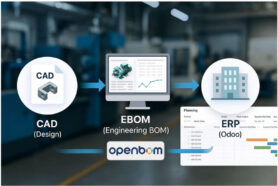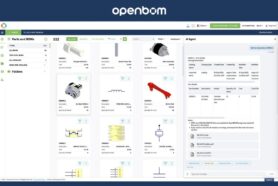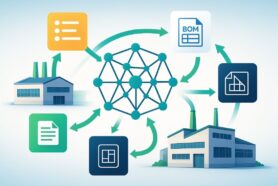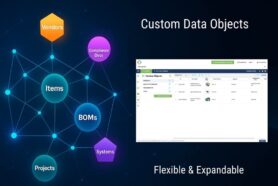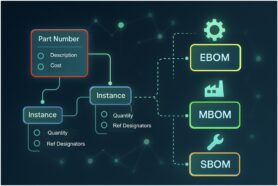
Digital transformation is all the rage in the world of business. Manufacturing companies are no exception; those that have not started their digital transformations are quickly falling behind. There are many different aspects to a successful digital transformation, but one of the most important is having the right software licenses in place. Concurrent licenses can play a critical role in this process, and it’s important to understand how they work and how they can benefit your business. In this blog post, we’ll explore what digital transformation is, and why concurrent licenses are so important.
My attention was caught by the Digital Enterprise article by Mark Pendergast – The Problem With Named User Licensing. In my view, Mark nailed the topic of licensing by explaining how each organization is using PLM software. Here is the passage:
We can break the usage curve into four major segments. The Power Users, the Normal Users, the Casual Users, and the Non-Users. The percentage of each of these types of users will vary with your organizational needs, but they represent the declining exponential nature of the PLM usage curve.
The Power Users are getting full value for the system. Their main job is pushing data around. They might be Change Coordinators or Release Engineers. PLM is their job. The Normal Users are getting good value from the system. Their main job is not PLM, but they use it quite a bit – though their usage might be periodic, high at some times and low at others. The Casual Users get minimal value from the PLM system. They typically support the people that use PLM. They might occasionally give approval or look at a BOM or drawing. The Non-Users were given access just in case they might need it. They get no value from the system, but having access eliminates headaches of getting them access if by chance they would need it.
Mark also nailed the reason why legacy PLM vendors are pushing towards named licenses.
Of course, at 100% utilization, the costs for Concurrent licenses will be much higher than the Named User scenario – or will they? My experience is that the concurrency goes up as the user base goes up. The value delivered to that last engineer will never be a full concurrent user worth. The number of heads-down users normally grows very slowly regardless of the user base. The Concurrent licenses better represent how Value is delivered – via usage, rather than existence.
If we look at who takes on the risk of an implementation there is a clear difference. With Named User licenses the Customer takes almost all the risk. They pay upfront for full capacity and full capability and the Vendor can walk away after the sale and never return calls. If the project completely fails, the vendor may lose a little maintenance revenue, but most likely they will keep even this as the system limps along until it can be replaced.
With Concurrent licenses. The Customer pays for enough capacity to get started but still gets full coverage and full functionality. The Vendor only gets more money if the system is successful and grows in usage. If the project completely fails, the Vendor never gets the full named user purchase price and gets very reduced maintenance as the system limps along until it can be replaced.
So, if Named User licenses are such a problem, why do Vendors push them so hard? Though I have never sold PLM software, I speculate that it is because of the incentives of the sales system. The salesperson gets compensated for the sale. With the Named User license, it is a one-time, big bang and then they are done. Lots of commission and then on to the next sale. With Concurrent licenses, it is a journey with sales dribbling in as the Customer becomes more successful. No big payoff and on top of that a long-term commitment. The sales people would prefer to play the lottery and hope for the big payoff, rather than slog along earning every Concurrent seat.
The problem Mark explained existed in the PLM business for a long time. However, there are two changes that make this problem really critical and these changes are a digital transformation and the subscription model.
Digital Transformation
As companies are moving to digital transformation, one of the most critical questions is how to organize the product data management and information flow that is coming up. Business process and product development process need to be more aligned and it triggers the question of how to get everyone access to digital technologies, more specifically to PLM solutions and process management. PLM System is such a digital technology that can be used by everyone. The old “engineering orientation” of PLM is now replaced by the need for everyone to get access to information. Without that, your next digital transformation project will be DOA.
Subscription Model
Old product lifecycle management systems were expensive and relies on a perpetual licensing model. Once, PLM licenses were sold to the company, they are usually used for a long time. So, the PLM deal was one time – to sell and go home. Modern PLM systems are delivered via subscription. These are SaaS solutions and organizations are subscribed to use them. It is such a “pay as you go” model. The SaaS model also requires vendors to continuously “fight for renewal” and improvements. In such a way companies can grow their usage of these solutions gradually as needed.
Why Concurrent License is The Best For Digital Transformation
The concurrent license gives you the best way to start using the technology and expand as you go. So, your digital transformation project will start by using a low number of licenses and then will push towards a higher number of licenses and service consumption. In such a way SaaS models are very much aligned because multi-tenant SaaS platforms provide the needed level of elasticity for vendors and customers at the same time. Unlike old legacy on-premise models, the cost to start using a SaaS platform is zero and the value will be growing together with the growing consumption of the software.
Conclusion
At OpenBOM, we built an innovative concurrent license model helping manufacturing companies to find the optimal way to build their business processes, business strategy, and product lifecycle management experience. Managing data using the OpenBOM SaaS platform is easy and allows all participants of the product’s lifecycle to get access to all information at the time when they need it. Also, OpenBOM is fully transparent about the pricing. Check OpenBOM Pricing page to learn more.
REGISTER FOR FREE to check how OpenBOM can help you today.
Best, Oleg
Join our newsletter to receive a weekly portion of news, articles, and tips about OpenBOM and our community.


